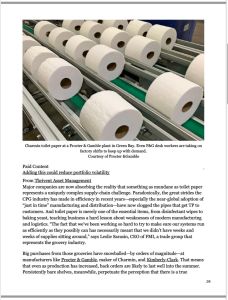
Article
The Case of the Missing Toilet Paper
How the Coronavirus Exposed US Supply Chain Flaws
Fortune,
2020
Recommendation
Usually just-in-time manufacturing facilities and on-demand supply chains do a good job of getting you what you want, when you want it, but they aren’t designed for a crisis. As Fortune magazine writer Jen Wieczner explains, the COVID-related United States’ run on toilet paper provides an object lesson about the challenges that extraordinary times pose to the delivery of ordinary products. Learn why this link in the supply chain broke and what manufacturers and retailers are doing to restore rolls to your restroom.
Summary
About the Author
Jen Wieczner is a senior writer covering finance and business at Fortune magazine and a founding editor of The Ledger, which explores the intersection of money and technology.
Learners who read this summary also read
Article
Article
Article

















Comment on this summary